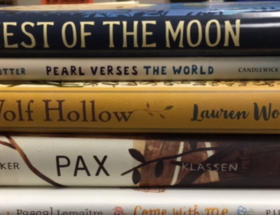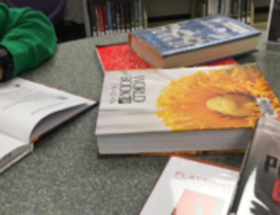Four things I (re)learned in 2017:
PLN Within and Without
Professional Personalized Learning Network “is a tool that uses social media and technology to collect, communicate, collaborate and create with connected colleagues anywhere at any time. Participating educators, worldwide, make requests and share resources.” (Whitby, 2013) Being a life-long learner requires a lot of effort on one’s part. In past years, I worked hard to continue learning on my own by reading stacks of the most current professional books, attending professional training sessions or taking my edu-heroes out for coffee and learning from them face-to-face.
I won’t say that I’ve abandoned reading, attending sessions or face-to-face conversations. I will say that I’ve added social networks to my PLN. Now I can learn from people I’ve not met personally who may live or may not live in the U.S. I can “individualize” my learning by listening to various podcasts from teachers, administrators, coaches, educational authors, university professors, researchers or students themselves (e.g. #BowTieBoys).
This year has also shown me that I can use technology to connect more closely with peers in my own district. A quick cwith those at campuses around my district also add to my personalized learning. It’s an amazing world we live in when one can learn 24/7 from others in one’s chosen profession.
You can be assured that my PLN will be in “full-on” mode in 2018.
Kids Lead the Learning
Is this a scary thought? It shouldn’t be. I’m not suggesting that I learned to throw out curriculum or standards. What I am suggesting is that I re-learned how to listen closely to kids.
When I listened I heard kids talk about things they were curious about or interested in; things that surprised or captivated them. That was a clear indication to me of books, videos, art, images or sound recordings that needed to immediately make their way into the classroom. I can ask as I plan, “In what ways can I introduce the curiosity bits as they relate to what kids need to know as readers and writers?”
One example: teaching persuasive writing moves in an elementary classroom by viewing the Train On commercial put out by Pokemon. Together we imagined, and wrote down ideas for, the original thinking behind the ad team’s persuasive concept for the commercial. We paired that with a read-aloud of A Pig Parade is a Terrible Idea and again collected our observations of ways in which the author worked to persuade readers using Michael Ian Black’s book as a mentor text.
Individualized Intervention
Working with teachers this year as we planned intervention made it clear to me the reality that students within the same group often have different and varying needs that require support. It’s difficult, but not impossible, to individualize instruction in intervention. This year it proved helpful to use additional screeners to pinpoint the exact phonemes, word parts, or letter combinations that students needed to master. I was able then to create an individualized plan for students within the same group. While other students were reading familiar texts, I could quickly work for 5-7 minutes with a student on targeted word work and then send follow-up practice activities to work on in their classroom or at home.
It also became clear that our students who required intervention were missing important literacy events in the classroom.
Book clubs and literature circles lend the reader opportunities to choose, read and discuss engaging texts. It’s the closest thing in the elementary classroom to authentic adult reading experiences (and the very thing we’re hoping to promote). We wondered what would happen if students could still experience being a part of a book club during their time in intervention. We’ve tried it on our campus and seen promising results. Part of the intervention session is conducted using research-based resources and then a portion is set aside for a teacher-supported book club. The interventionist plans the book club with targeted strategy modeling and practice. Students are not missing out on the opportunity for book choice (they choose the selection from a collection of books), reading and discussing with a close-knit community.
The chance to experience this critically important literacy event for these students who need support also has the added benefit of fostering motivation, interest and engagement for students who desperately need those very things.
Needed Change in Curriculum
Dr. Geneva Gay’s work has had a profound personal impact on me this year.
The population on our K-6 campus is rich with ethnical and cultural diversity. Each family represented in our school is a testament to the idea that “diversity makes us smarter. Researchers have documented that students’ exposure to other students who are different from themselves and the novel ideas and challenges that such exposure brings leads to improved cognitive skills, including critical thinking and problem solving.”
There have been many opportunities this year as I planned with teachers to research and choose texts that allow our kids to see themselves and others. Recently in one of our 5th grade classrooms over the course of a week, students read and discussed from texts authored by Kwame Alexander, Thanha Lai and Margarita Engle. I believe it’s critical that we continue to allow students to read both fiction and nonfiction books that are written by and feature people and events from a variety of ethnic groups. If you’re looking for titles, check out these sites:
USBBY/IBBY (Look for Outstanding International Books Google Map Lists)
Americans Indians in Children’s Literature
The new year holds promise for more personal and professional learning. Some of my new knowledge will, no doubt, be serendipitous. And yet, so much more will be learning I pursue on my own.










